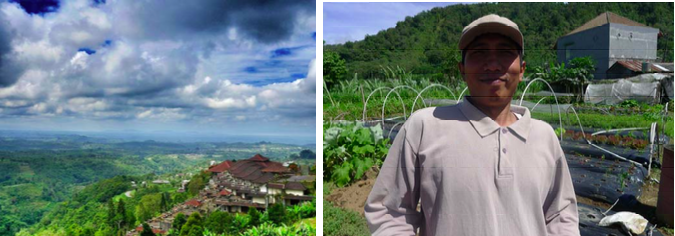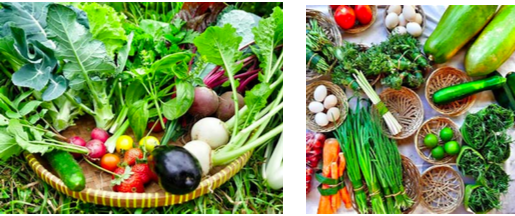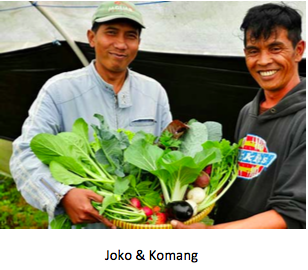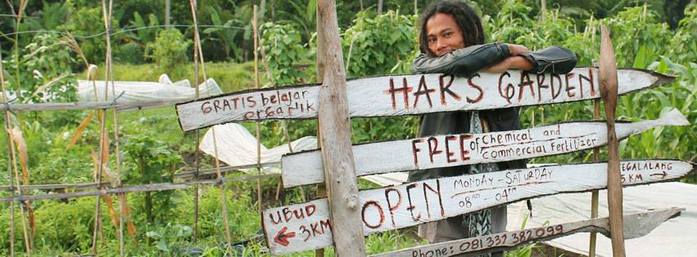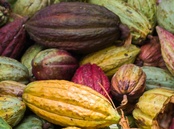Holding on to anger, resentments, hurt and pain rather than forgiving is something that is very detrimental to our health.
forgiving is something that is very detrimental to our health.
When we can resolve major issues like power, control,
abandonment, jealousy, and anger issues the sooner we can move out of the drama and into a really creative, productive and exciting life in which we are truly growing!
When we overeat eat cooked foods, processed foods, junk foods, packaged foods loaded with chemicals, over-salty & over-flavoured foods, or we overeat then our colon is stressed. And when our colon is stressed, we are stressed. And then it’s much harder to be kind, positive, loving or forgiving.
We are so addicted to foods that harm us. And so it is easy to get addicted to addictive negative
emotions that harm us too.
And just as much it’s easy to get addicted to anger, hate, confusion, sadness, despair. Powerful emotions generating powerful addictive chemicals in our body.
But when we eat a raw diet, it’s possible to break the cycle. Diet and emotions work together in so many ways. And interesting that eating a diet which is not addictive in any way, we become free of addictions. We think more clearly. We aren’t so easily stressed.
This is what we focus on our retreats. We do a week of raw food, eating our way into health one bite at a time. We workout and bring play back into our life. And we do our inner work. And together these planes support each-other to generate a huge forward momentum that we are truly shift into a whole new way of life and a whole new level of vibrancy!
We offer personalised retreats to support you in any transition; a holiday just for you. Please see our personalised page for all the details.
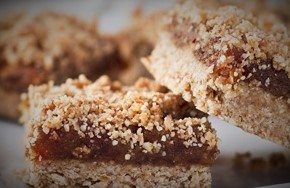 Who isn’t a huge “date square” fan?
Who isn’t a huge “date square” fan?
You can practically use this fruit to sweeten any of your recipe. The Date Square are one of the best sweet treat. However, the traditional one were not the healthiest form. We’ll share with you the recipe that adheres our raw & vegan momentum.
This is a very close variation of the Old-fashioned Date Square recipe that gets raves from almost everybody who tasted it.
For the Crust
You will need:
- 5 cups whole raw almonds
- 5 cups oats
- ½ tsp salt
- 10 Medjool dates, pitted and roughly chopped
- ¼ cup coconut oil
How to make:
- Line an 8×8 loaf pan with a parchment paper. (You can also use and grease a Pyrex baking dish.)
- In a food processor, pulse the almond, salt, and oats until they are finely ground.
- Add in the dates and process until crumbly again.
- Melt the coconut oil and add to the mixture and process until sticky. (
- Remove from processor, set aside ¾ cup of the mixture for later.
- Press the rest of the mixture very firmly and evenly into the pan.
For the Date Filling
You will need:
- 25 Medjool dates, pitted and roughly chopped (~2.5 cups)
- ½ cup of water
How to make:
- Combine all ingredients until a paste forms. (Add more water if need.)
- Scoop out the date mixture onto the crust and gently spread with the back of a wet spatula until even.
- Add the ¾ the crust mixture that you set aside on top and gently spread down with fingers.
- Refrigerate for at least 1 hour, preferably overnight.
- Cut into squares and serve chilled for best texture.
- Store leftovers in a ziplock or anything that is sealed in the fridge or freezer for up to a week.
We hope you enjoy this super tasty and easy-to-make Date Square recipe. We can guarantee that it won’t leave you feeling guilty at all!
EATING your way CLEAN with FRUITS vs JUICING – High Carb
New year is always a great time to kick start new projects, new programs, set goals, make healthier choices, start a dance or singing class, and to generally bring focus on new intentions for the year.
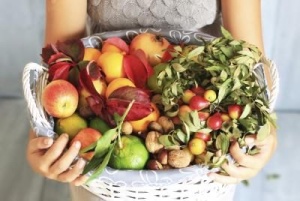
If you’re still recovering from the Christmas festivities, or have just had no time and are already back at work perhaps these tips can help you start today.
All of us have heard that the greatest thing we can do for our body and for that extra kick in motivation is to Alkalise!
If you are suffering from lethargy, have weight problems or water retention your body is probably overly acidic. When you alkalize your body through proper eating and healthy living, you can overcome all sorts of discomforts, reach your ideal body weight and literally have more energy for all the things you want to do.
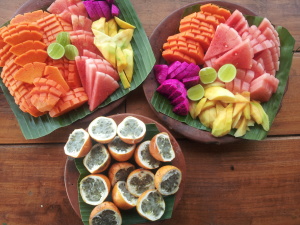 One of the most obvious signs of acidity is excess body fat. When your body is acidic, it tries to neutralise the acid. One of the ways it does this is to store excess acid in fat, which can lead to that puffy feeling. When you alkalize your diet, your body sweeps through and removes this buildup.
One of the most obvious signs of acidity is excess body fat. When your body is acidic, it tries to neutralise the acid. One of the ways it does this is to store excess acid in fat, which can lead to that puffy feeling. When you alkalize your diet, your body sweeps through and removes this buildup.
To alkalize you need to eat more alkalizing foods and fewer acidic foods. In this way, you can create a healthy diet that will help you reach your ideal weight without “starving” yourself.
Juicing and fasting / abstaining from food is one way. But time and time again its proving that for most people it disrupts their metabolism and only works as a quick fix rather than having long term success. Most people break a fast in desperation to satiate hunger and the unhealthy relationship to food is re-instilled.

So the new option to try is to eat your way clean!
All fruit is alkalizing, and so are all leafy green. Vegetables are next. But nuts, seeds and oils are on the border of being neutral acidy/alkalinity. If you focus on making sure you eat all alkalizing foods for each meal, guess what you will be on your way to an alkaline body very quickly.
On the opposite end of the alkalizing spectrum is the acidic side: sugary and manufactured foods, meats, fish, dairy products, bread and other cooked grains, drugs, alcohol and caffeine. Pork and Parmesan cheese are a few of the extremes. To neutralize the acidity of just one cup of coffee you need to drink 12 glasses of water!
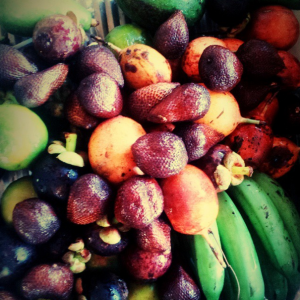 Most people get their daily calories from concentrated foods – too much protein, too much fat, and too much sugar sprinkled on top. These meals are generally smaller because they are caloric-ally dense and acidic.
Most people get their daily calories from concentrated foods – too much protein, too much fat, and too much sugar sprinkled on top. These meals are generally smaller because they are caloric-ally dense and acidic.
When we make the switch to high carb foods we need to eat more quantity. The trick is not to under-eat in calories otherwise the body goes into starvation mode and can wreak havoc to the metabolism. Under-eating is the biggest reasons why most people can’t sustain ‘diets’. Most, if not all basic bodily/brain functions require glucose, not eating enough ‘good carbohydrates’ will have the body screaming for the ‘dense/acidic’ foods to get its fix.
When you start making changes to alkalize the body, toxins will be released. You may feel ill temporarily, but push through it, once they are eliminated they are gone and a surge of energy will take its place. Make sure you drink at least two litres of purified water or fresh juices per day (you can include enemas or colonics – they aren’t necessary but they do speed things up in the early stages.) so your body can flush things out quickly.
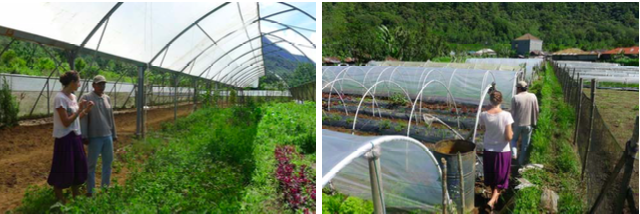
When I first began to get serious about my health and what I ate I started to look for the most accessible way to get the freshest produce. Living in the city the local health food shops didn’t quite stock the freshest choices. There just wasn’t the demand for it. And it was over priced for the amounts that I needed to sustain myself.
So I found the main organic distributors. The middle man. The companies that bought bulk from the farmers and then supplied the organic shops and businesses in town. The alarm would be set for 4am and with a 40 minute drive to the fringes of the city, this would be our weekly dedicated ‘shopping trip’.
Armed with a trolley the size of a mini platform we would shop alongside the health store owners in the huge market sheds. Most things had to be bought in bulk. So whatever was in season was eaten. We were coming home with boxes of cos lettuce, a variety of greens, an abundance of vegetable and fruits, perhaps it was oranges and cherries that week, and peaches and passion fruits the following week. Life was pretty simple, we might not have been eating a huge variety however what we were eating was all organic and it tasted fantastic.
And It made me happy knowing that I was one step closer to eating from the land.
Things have changed since then. I ended up moving closer to the farmer. But the farmers also have better access to us now. Today due to the demand, Farmers’ Markets have exploded in most places. It’s so good to see! We really have many more choices today, real opportunities to vote with our dollar to make a stand for what is most important to us.
In this video I share my joy and love for organic farming and knowing where my food comes from.
Its really living from mother earth to the table. And this gives me a sense of community and interaction that I never felt before, enriching my life even more.
See you in Bali on our next 100% organic retreat! www.artofliferetreats.com
Oksana
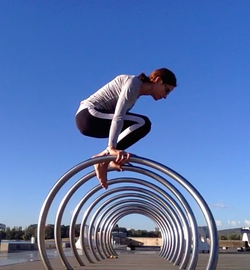 One thing I don’t want to use to help me with my handstands is the wall. That means I need to look for a few other interesting variations.
One thing I don’t want to use to help me with my handstands is the wall. That means I need to look for a few other interesting variations.
A few weeks ago I popped up a post of us practicing yoga on top of some blocks. That helped my skinny arms and tummy get strong.
Then I looked over from the blocks. These bike racks hang out near where I hang out and so I thought I would see if there was a way for us to hang out together.
I tried a few push variations with me on top and pushing down with my armpits to bring my knees to chest. Then I realised I was finding a lot of things to push on but was there a way to get some pull action going on.
It lead to the upside down variation of shoulderstand, which I have called a flying shoulderstand, and you can check it out in the video below.
This gave great pull action around the armpits and also I tried to minimise momentum and use my tummy muscles to help me move around and into and out of the posture. I am actually pretty weak so you can see a little swing here and there.
This would be better if I were higher off the ground so I could try and let my neck be a bit free.
I did not want to put my head on the ground and I don’t recommend anyone even try what I am doing without some supervision. If you are not strong enough you would fall on the back of your neck and that is obviously not good so I am not advising go out and do this at all or unthinkingly. This is mainly for my students and safe practitioners.
Hmm, I wonder if we will find some bike racks in Bali for our retreat?
Happy and safe practicing!
Much metta,
Sonja
www.yogacafecanberra.blogspot.com
www.artofliferetreats.com
 In general jams have been made from the need to preserve fruit so you can enjoy them and their flavours in periods in which it’s hard to source them.
In general jams have been made from the need to preserve fruit so you can enjoy them and their flavours in periods in which it’s hard to source them.
At the time of ancient Rome there were very similar products to jam, made from whole fruit dipped in sweet wine, mulled wine, juice and even honey.
The Italian Geography of fruit and their flavours are:
South Italy, thanks to high temperatures is famous for citrus marmalade.
Lemon marmalade in Sicily, oranges in Calabria and quince and figs in Puglia. In these lands citrus are vast and can enjoy a hot and tireless sun.
Central Italy offers a wide range of grape jam.
In Northern Italy, thanks to the humid climate, the forest fruits are used for jams. Blueberries, blackberries, raspberries and strawberries.
Jam can be made from: cherries, plums, oranges, strawberries, peaches, apricots. One of the greatest benefits of not boiling the fruit unlike the traditional way of making jam is that all the enzymes are intact and so much less sugar is needed. They can enjoyed with raw crackers and breads.
It’s ideal for the whole family.
An abundance of colors and flavours to be tasted at any time of the day: breakfast, snack time and can also be used for the preparation of so many other raw sweets.
I used lemon and dates as the preservative. Dates with its natural sugar enables ‘marmelada’ a 4-5 day life in the fridge.
Ingredients:
- 500g of ripe apricots, or any fruit of your choice
- 7-8 large fresh dates
- Juice-half a lemon
- 1 teaspoon of lemon peel
- ¼ teaspoon nutmeg
Put all the ingredients in food processor and process until a thick mass – the marmelada is formed. It will need 2-3 min, depends of the power of food processor.
Put the jam into a jar, eat and store the rest in the fridge.
Hugs from Italy! :))
Neli Todorov writes an active blog http://nelisraw.blogspot.it/ and shares news of workshops and events on her facebook page
Hello! I’m a raw food chef from Italy.
I studied architecture in Venice and worked for 3-4 years in a company of light as a designer. I never liked the idea to spend my life in front of the computer and always had a passion for a healthy lifestyle. When I started to eliminate meat and fish, step by step I started to eat more raw food and my passion came alive.
I studied this philosophy with books and practices. And as I witnessed amazing benefits in my own life, I decided to start teaching others about raw food. Art and creativity has always been part of me and I try to put my inspiration on the plate, using lots of colors to encourage the appetite with different tastes.
Italy has always been known for good food. Italians love to eat. Italian tables are full of fresh flavored food. With every main meal there is always a large fresh salad. Italy is rich in diverse vegetables and fruits, Italians are known to eat a lot of vegetables. In recent years there is a growing interest in raw food, fruitarians, 80/10/10 diet – it’s alive everywhere.
There are many social gatherings and dinners based on raw foods. Raw food is now amongst nutritionists, natropaths, doctors, personal trainers who inform others about the many benefits of this lifestyle; people who tell their stories of sustainable consumption and healthy living.
This is a general Raw menu in Italy:
Breakfast: Juice of carrots, beetroot, apple and ginger with carrot cake.
Snack: Dried fruit
Lunch: Radicchio with dried tomatoes and sunflower seeds
Snack: Raw tart with blueberries
Dinner: Pappardelle pasta of carrots with ricotta seeds
Dessert: Peach sorbet
How Italy loves pasta! We are always in demand for recipe’s which will show how to make raw bread or a typical Italian dish (pasta, ravioli, rice). I want to present this recipe to you from the south of Italy “Taralli”.
Taralli is a special Apulian recipe, a genuine snack for adults and children. Taralli can be sweet or savory. Savory Taralli may be flavored with onion, garlic, sesame seeds, poppy seeds, fennel, pepper, chili or just salt. Taralli are oval shaped about 1 to 1.5 inches in circumference. This recipe is great when traveling, when you are not able to buy fruit.
This is a savory 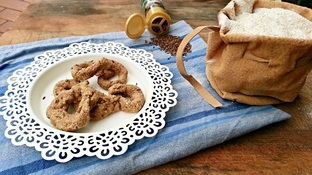 version:
version:
Ingredients:
1 cup millet flour (millet flour makes “Taralli” crispy)
1/2 cup pulp sesame
½ cup soaked buckwheat
1 cup of green olives
½ cup water or less
salt is not needed because of the salty olives
Put all the ingredients in a food processor until the dough forms into a rough mass. Pinch walnut-sized pieces of dough, roll first between your hands, and then against the wooden cutting board, so that the dough forms a thin rope, about ½ inch (1 cm) in diameter and 4” long (10 cm). Shape each rope into a ring, and seal the edges together by pressing lightly, then set aside the Taralli rings on a teflex sheets. Season with cumin and put in a dehydrator at 42 degrees for 12 hours or until perfectly crispy.
Enjoy the flavors of Italy!
Neli Todorov writes an active blog http://nelisraw.blogspot.it/ and shares news of workshops and events on her facebook page
I wasn’t sure about writing a detox blog this year because it seemed predictable, but something clicked inside of me and I wanted to write about how we can learn to listen more about our body and know when it is time to reboot or reset the button.
There are many reasons why people have the need to clean out the cobwebs. Here the main reasons:
overindulgence
chronic-stress
 fatigue
fatigue
sluggishness
digestive problems (bloating,skin problems)
Results:
Gain more energy
increase vitality
refined senses
clear mind and focus
positivity
inspired and motivate
Realigning with our internal guidance system is the reason why I detox. I love the way my food-mind -body comes into balance. We need to learn how to listen to our body’s and know when it is time.
Here is a really simple plan.
1 big glass of warm water with Lemon or Apple cider vinegar upon rising.
1/2 an hour later 1 smoothie
Ginger/Mint/Mango Smoothie
2 cups firmly packed Greens: spinach, kale, collard, purslane,
1/2 cup mint
1/2 lemon with rind for bioflavanoids
1/2 avocado
1 mango fresh or frozen
2 cups water
1 Tbs. spirulina, hemp powder, maca, optional
Blend in a high speed blender until smooth
Drink lots of water during the day
Coriander, Spinach Sweet Potato Soup
2 cups Spinach or Kale
1/2 cup coriander
1/2 avocado
1-2 Tbs. Coconut oil
1/2 sweet potato cubed
1 small nob tumeric fresh
2 cups water
Blend in a high speed blender and consume around 4 pm
Daily skin brushing – The skin is our biggest organ, by invigorating the whole body we allow the toxins to come out. It’s a really simple process to get the skin smooth and glowing, and also great for those stubborn cellulite areas too!
Sauna – infra-red saunas are the best, but any sauna will steam-clean you from the inside out. Make this a weekly habit for a month and just feel the difference.
Exercise – this means walking, yoga, swimming – get out and about as much as you can.
Meditation – Find a nice tranquil place and make this your special meditation spot. Just 15 minutes a day with the intention of being still and quiet will do wonders for you.
By making small changes to your routine you can experience great benefits. It doesn’t mean you have to go-hard or go-home, it doesn’t mean you need to restrict yourself and push yourself to the edge every time. Just a few simple additions to your daily life will bring a spring back to your step, and you never know perhaps they will become a regular part of your life.
Be happy, love life and shine!
“Take all you can eat but eat all you take.”
At first glance, this might seem like a sure-fire way to obesity. The sort of instruction that tells you to eat everything on your plate and don’t even think about leaving the dinner table until you have!
However, it was not.
Dad was very mindful of waste. He grew up in a time where you were lucky to have a pair of shoes to walk to school in and, despite limited travel opportunities, knew enough about the world to understand there were plenty of people who were lucky to get one meal a day, let alone three.
So Dad’s advice was about being mindful and appreciative of what you had. He would always tell us we could go back for more if we were really hungry but perhaps put only the amount of food on your plate that you are sure you can eat. At the same time he would remind us that sometimes your eyes can be bigger than your stomach so perhaps take a little and then wait and see if you need more.
Having lived in countries like Bangladesh, India, and Sri Lanka I have seen for myself how some families throw out more food after one meal than other families get to eat in a day and I always think of my Dad’s advice when I see food bins overflowing with ‘scraps’.
This piece of Dad advice is very much in line with common sense ideas about listening to what your body really needs, which many of us who have always enjoyed plenty, can easily forget.
Number 2 Way To Beat Overindulgence: Or When it is Ok to have Mars Bars for Breakfast Dad also gave us Mars Bars for breakfast on weekends before our athletics meets. To this I think most kids would go hooray and most parents would probably raise their eyebrows. But Dad was always about activity. His approach to eating was very much about balancing input with output. He knew that after eating that Mars Bar we would spend 3 hours out in the sun running around competing in 1500m runs, sprints, long jumps, shot puts, and all of the handstand competitions that went on in between events.
You might think Dad was all about junk but that is not true. He was thinking about nutrients based on the information he had at the time, combined with how much energy we would need and giving us something to eat that would not make us feel full and sluggish.
Dad was not just handing us rubbish. You see, Dad also made our sandwiches with multi-grain and wholemeal bread back before they were popularised telling us that eating white bread was like eating fresh air (i.e., basically nutrient poor). Anyway, his approach to food was that you needed to balance intake with output, consider whether what you ate would give you the energy you needed to do what you wanted.
On days where we weren’t doing much you can bet we were not being offered chocolates, although this was a rare day indeed as Dad would always have us engaged in something fun and active.
Actually, Dad was unknowingly following the only diet ever known to actually work in the long-term, which is to balance what you eat with what you do.
So, this piece of Dad advice is extremely important: “Eat to live don’t live to eat.”
While those are not Dad’s words, they are what he modeled and still models to this day. If you don’t do very much, then don’t eat very much. If you are doing a lot, then eat so you can do the things you need to do. In this regard, our Christmas Day with Dad always started with a family bike ride so that we might feel hungry enough for Christmas lunch rather than eat the food because it was there.
Number 3 Way To Beat Overindulgence: Don’t Pop Your Buckle This last piece of advice is actually what Dad’s Dad used to say. Or, at least Dad always quotes Grandfather when he says it.
“Always leave the dinner table feeling that you could eat a little more.”
This is excellent advice and stops you feeling like a python when you get up from the Christmas dinner table.
This is related to both the first and second pieces of advice. It is about eating what you need, and about ensuring whatever you eat does not prevent you from doing the things you want to or need to do.
The idea of eating so much that you could not go out and play with the kids or fix the car or tinker around in the shed was/is abhorrent to Dad who, to this day, will make sure he gets up to ‘unblob’ himself (as he puts it) if he has had a big lunch that is putting him to sleep.
In Sum Dad’s advice comes from a person who was physically active, and who appreciated that your body needs to work and move well so you can participate in a variety of daily activities. Dad was a runner and did not practice physical yoga. He does not have much idea of yoga beyond the knowledge that it is something I go and teach and do and which seems to be associated with me spontaneously doing handstands in the driveway or hanging from the beams of his verandah. However, to me his advice is very much in tune with ideas about respecting the interrelationship between body and mind and community that I have read in yogic texts and have learned from my teachers. Thanks Dad!
Merry Christmas to all. Happy and safe practicing.
